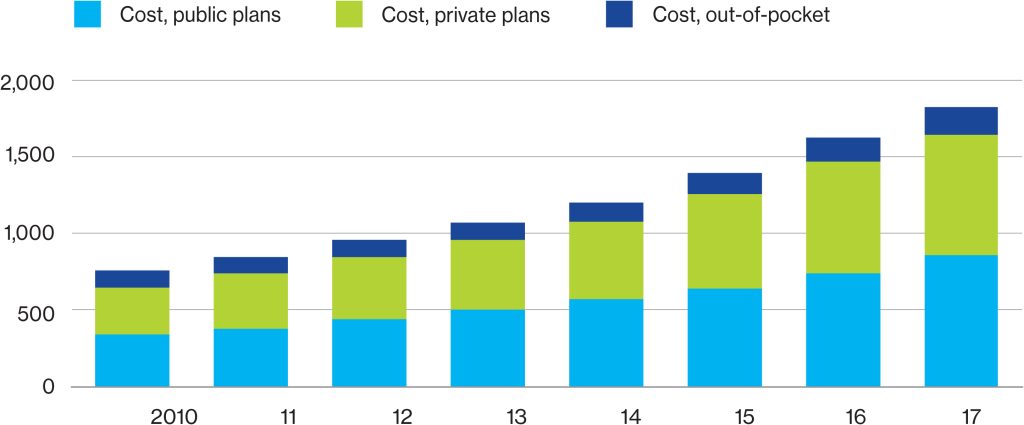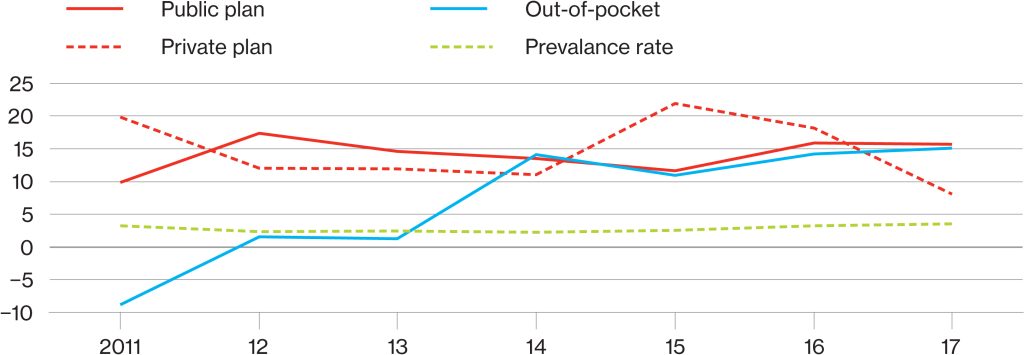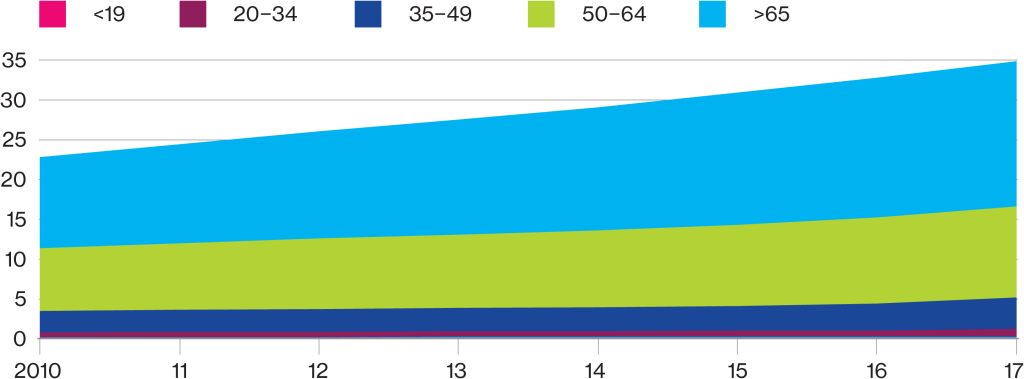
Diagnosing patient access to diabetes medications
As part of the conversation on options for universal pharmacare in Canada, The Conference Board of Canada examined patients’ access to necessary diabetes medications.
This research shows that diabetes in Canada and the costs of medications to treat it are on the rise. It also shows that private insurance plans are covering more of these costs, and that private plans generally offer more extensive coverage.
Prevalence
Chart 1
The number of Canadians living with diabetes is on the rise
(number of people, millions)

Note: Does not include gestational diabetes.
Source: Government of Canada, Canadian Chronic Disease Surveillance System.
From 2010 to 2017, the number of Canadians living with diabetes increased by 28.7 per cent. This is significantly higher than Canada’s population growth over the same period.
Costs
Chart 2
Reimbursement costs for glucose-lowering drugs are also on the rise
($ millions)

Note: Glucose-lowering drugs include long-, intermediate-, and rapid-acting insulins and their equivalents, and several non-insulin medications.
Sources: The Conference Board of Canada; IQVIA Canada, PharmaStat Plus Database.
Reimbursement costs for drugs to treat diabetes are also rising. Since 2010, these costs have increased by an average of 13 per cent per year.
Chart 3
Reimbursement costs for medications from all plan types
($ millions)

COPD = chronic obstructive pulmonary disease.
Note: Reimbursed by public programs, private plans, and through out-of-pocket expenses.
Source: IQVIA Canada, PharmaStat Plus Database..
Glucose-lowering medications represent the second largest drug spending category in Canada. Canadians living with diabetes spend $1.8 billion on them every year—a figure we expect to grow.
Chart 4
Reimbursement costs vary by plan type, but have grown faster than the prevalence rate
(annual growth rate, year-over-year percentage change

Note: Does not include gestational diabetes.
Sources: IQVIA Canada, PharmaStat Plus Database; Government of Canada, Canadian Chronic Disease Surveillance System.
Drug claims
The number of private and public claims for glucose-lowering drugs has increased much faster than diabetes prevalence. However, we cannot be certain from this analysis that people now receive better treatment.
Chart 5
More people are submitting claims for glucose-lowering drugs
(number of claims, millions)

Note: Does not include gestational diabetes.
Source: Government of Canada, Canadian Chronic Disease Surveillance System.
The number of claims submitted for glucose-lowering medications has also risen. Since 2010, the number of private and public claims submitted for glucose-lowering drugs increased by 52.9 per cent—from approximately 23 million to roughly 35 million.
Chart 6
Claims are highest for seniors
(number of claims, millions)

Source: Public Health Agency of Canada, Diabetes in Canada.
Growth in claims is highest among Canadians aged 65 and older (growth of 60 per cent) and 20 to 34 (growth of 56 per cent).
This increase in the number of claims is steeper than the growth in prevalence rates and reimbursement costs, which implies that people living with diabetes are submitting more claims than they used to.
Health care reforms need to take these increases into account, while also considering how to provide equitable access to treatment for uninsured patients living with diabetes.

